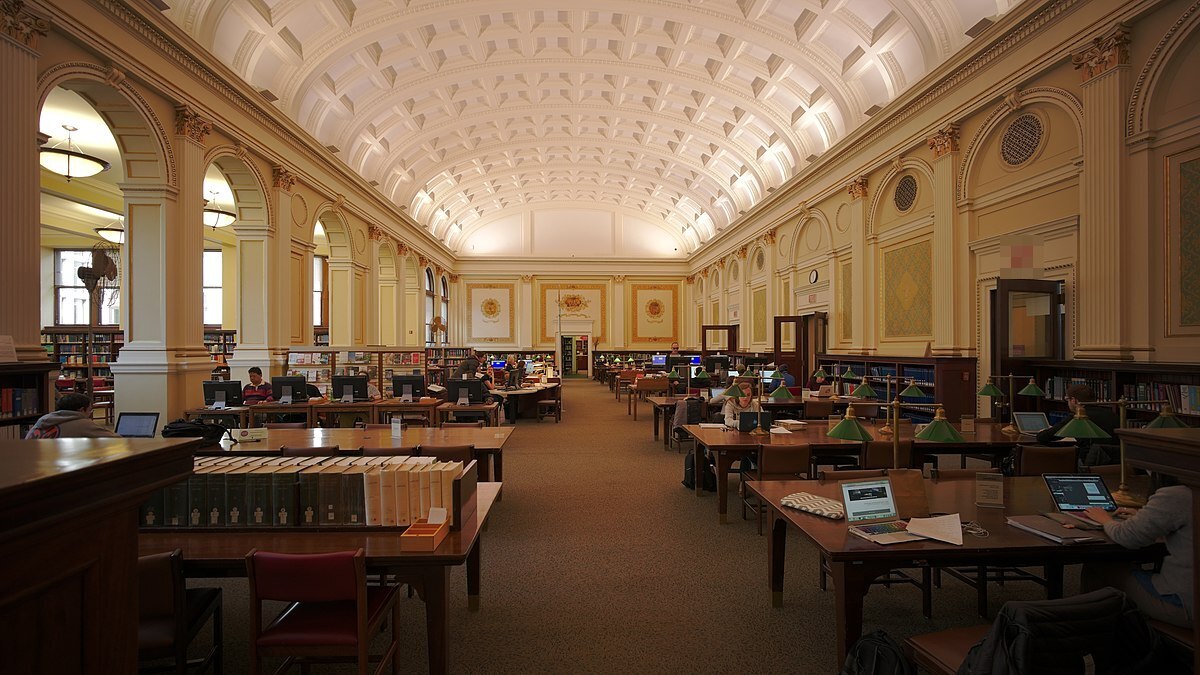
Did you know the Carnegie Library of Pittsburgh has been a cornerstone of knowledge since 1895? This historic library, founded by industrialist Andrew Carnegie, offers more than just books. It’s a hub for community events, educational programs, and digital resources. With 19 branches spread across the city, it serves as a vital resource for Pittsburgh residents. From its stunning architecture to its extensive archives, the library is a treasure trove of information. Whether you're a student, researcher, or casual reader, the Carnegie Library has something for everyone. Ready to dive into some intriguing facts about this iconic institution? Let's get started!
The Origins of Carnegie Library of Pittsburgh
The Carnegie Library of Pittsburgh has a rich history dating back to the late 19th century. Here are some fascinating facts about its origins and early years.
-
Founded in 1895, the library was a gift from industrialist Andrew Carnegie, who believed in the power of education and knowledge.
-
Carnegie's donation amounted to $1 million, a significant sum at the time, which helped establish the library and its initial collection.
-
The first branch opened in the Oakland neighborhood, serving as the main library and administrative center.
-
Architect Frank Alden designed the original building, blending classical and modern architectural styles.
-
Carnegie's vision was to create a library system accessible to all Pittsburgh residents, regardless of their social status.
Expansion and Growth
As the library system grew, it expanded its reach and services to better serve the community. Here are some key milestones in its expansion.
-
By 1900, the library had already established five branches, each strategically located to serve different neighborhoods.
-
The Homewood Branch, opened in 1910, became one of the largest branches, offering extensive resources and programs.
-
In 1929, the library introduced a bookmobile service, bringing books to remote areas and underserved communities.
-
The 1970s saw a major renovation of the main library, modernizing its facilities and expanding its collection.
-
Today, the library system includes 19 branches, each offering a unique set of services and resources.
Services and Programs
The Carnegie Library of Pittsburgh is more than just a place to borrow books. It offers a wide range of services and programs to meet the diverse needs of its patrons.
-
Free Wi-Fi and computer access are available at all branches, helping bridge the digital divide.
-
Early literacy programs support young children and their families, fostering a love of reading from an early age.
-
Job and career services provide resources and workshops for job seekers, including resume writing and interview preparation.
-
Language learning programs offer classes and resources for those looking to learn a new language or improve their English skills.
-
Cultural events and workshops celebrate Pittsburgh's diverse communities, offering everything from art exhibits to cooking classes.
Community Impact
The Carnegie Library of Pittsburgh has had a profound impact on the community, contributing to education, culture, and social cohesion.
-
Over 2 million visits are recorded annually, highlighting the library's importance as a community hub.
-
Partnerships with local schools enhance educational opportunities for students, providing access to resources and programs.
-
The library's outreach programs serve homeless and low-income populations, offering support and resources.
-
Special collections, such as the Pennsylvania Department, preserve local history and heritage, making it accessible to the public.
-
Volunteer opportunities allow community members to give back and support the library's mission.
Technological Advancements
The library has embraced technology to stay relevant and meet the evolving needs of its patrons.
-
Digital collections include e-books, audiobooks, and online databases, accessible from anywhere with an internet connection.
-
The library's app makes it easy to search the catalog, place holds, and manage accounts on the go.
-
Makerspaces at several branches offer access to 3D printers, laser cutters, and other high-tech equipment for creative projects.
-
Virtual programs and events have become increasingly popular, allowing patrons to participate from the comfort of their homes.
-
Tech help sessions provide one-on-one assistance with devices and software, helping patrons navigate the digital world.
Looking to the Future
The Carnegie Library of Pittsburgh continues to innovate and adapt, ensuring it remains a vital resource for future generations.
-
Sustainability initiatives focus on reducing the library's environmental footprint, including energy-efficient buildings and recycling programs.
-
Community feedback is actively sought to shape the library's services and programs, ensuring they meet the needs of all patrons.
-
Plans for expansion include new branches and renovations, ensuring the library system can continue to grow and serve the Pittsburgh community.
The Legacy of Carnegie Library of Pittsburgh
Carnegie Library of Pittsburgh stands as a testament to the power of knowledge and community. Founded by Andrew Carnegie in 1895, this library has grown into a cornerstone of education and culture in the city. With over 2.2 million items in its collection, it offers a wealth of resources for everyone. From rare books to digital archives, the library serves as a bridge between the past and the future.
Its 19 branches spread across Pittsburgh, making it accessible to all neighborhoods. Programs for children, teens, and adults ensure that learning never stops. The library also plays a crucial role in preserving local history, with special collections dedicated to Pittsburgh's rich heritage.
In a world where information is at our fingertips, Carnegie Library of Pittsburgh remains a vital institution. It continues to inspire, educate, and connect people, proving that libraries are more important than ever.
Was this page helpful?
Our commitment to delivering trustworthy and engaging content is at the heart of what we do. Each fact on our site is contributed by real users like you, bringing a wealth of diverse insights and information. To ensure the highest standards of accuracy and reliability, our dedicated editors meticulously review each submission. This process guarantees that the facts we share are not only fascinating but also credible. Trust in our commitment to quality and authenticity as you explore and learn with us.


